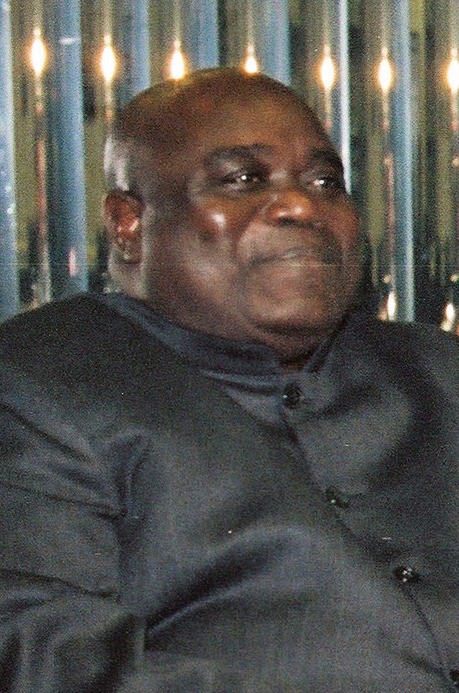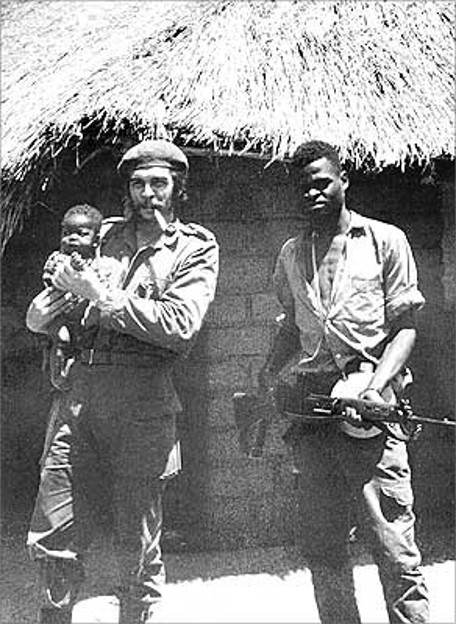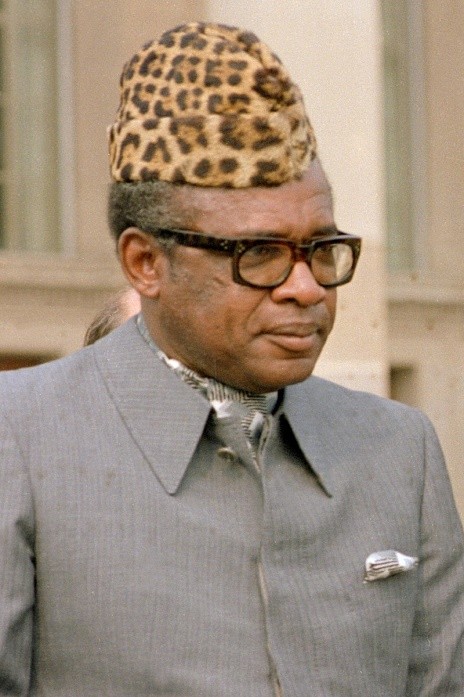Laurent-Désiré Kabila was born on the 27th November 1939 what was then the Belgian Congo. A Congolese revolutionary who became a prominent political figure to becoming the third president of Democratic Republic of the Congo (DRC).
Kabila was a long-time opponent of Mobutu Sese Seko – the president of Zaire previously and again officially known as the Democratic Republic of the Congo. Kabila led a foreign backed rebel group the Alliance of Democratic Forces for the Liberation of Congo (ADFLC) which was sponsored by Rwandan and Ugandan. Their objective was to overthrow Mobutu which they successful achieved in the First Congo War from 1996 to 1997.
The victorious military campaign led by Kabila placed him in the top position as new president of the country from 1997 to 2001, which name was promptly changed back to the DRC. However Kabila found himself in a vulnerable fragile position – a puppet for those foreign backers.
Unfortunately peace and stability didn’t last long; a year down the line Kabila ordered the foreign troops to leave the country fearing they may be involved in a potential coup against him. This action led to the Second Congo War from August 1998 to July 2003.
Kabila found himself in a difficult position as his Rwandan and Ugandan foreign backers were supporting several rebel groups to overthrow him. These included Rally for Congolese Democracy (RCD) and the Movement for the Liberation of the Congo (MLC).
It was betrayal within Kabila own personal security team that cost Kabila his life, during the war on 1st January 2001 he was assassinated by one of his bodyguards.

Guevara in the Congo
Che Guevara first met Kabila in April 1965; the Cuban revolutionist was accompanied by approximately 100 Cubans. Their objective was to overthrow the Congolese government in a Cuban-style revolution as they previously done.
Guevara and his camarada – Spanish for comrades, assisted Kabila and his rebel forces however only after a few months Guevara personally judged Kabila as “not the man of the hour”. Guevara wrote to Fidel Castro raising his concerns and the possibility of failing to Cuban-style revolution in the Congo.
Guevara was concerned about Kabila’s lack of discipline, easily distracted and poorly trained. Often turning up late to provide vital supplies, Kabila preferred spending his time in bars and brothels instead of training to fight the Congolese government forces.
Nonetheless Guevara’s viewed Kabila had “genuine qualities of a mass leader” during his campaign in the Congo. By November 1965, Guevara had to face the fact of Kabila’s lack of “revolutionary seriousness”. The reality of the incompetence of Kabila’s Congolese rebel forces ultimately led Guevara asking Havana to assist pulling his men out – although Guevara was seriously considering staying as a lone exemplar of revolutionary.
Read more about Che Guevara in the Congo here.

Congo Marxist mini-state
In 1967 Kabila and his remaining supporter moved to Fizi – Baraka a mountainous region located in South Kivu. It was there Kabila founded the People’s Revolutionary Party (PRP). External powers still played there part to assist Kabila, the People’s Republic of China (PRC) supported the PRP create secessionist Marxist state in the region.
Kabila Marxist state was short lived ending in 1988, many rumours about Kabila circulated and it was widely believed he died. However Kabila was very much alive and hiding in Uganda, it was his time there were he will meet his future supporters that ultimately led him to victory and becoming the head of state.
In Kampala its alleged Kabila met the future president of Uganda, Yoweri Museveni. This wasn’t a chance meeting as Museveni introduced Kabila to Julius Nyerere the former Tanzanian President, who later introduce him to the future president of Rwanda, Paul Kagame. These vital, influential and powerful people would back Kabila’s rebels fight against Mobutu Sese Seko regime.
First Congo War – 1996 to 1997
The aftermath of the Rwandan genocide in 1994 displaced many Rwandan Hutu refugees who fled across the border into Zaire (later becoming the DRC). Livings amongst the refugee camps were the Hutu militia who threatened the peace and security along the Zaire-Rwanda border.
The Kigali regime expressed their concerns to Kinshasa, the potential for armed conflict along the militarised boarder was high and requested the Hutu refugee camps be dismantled and moved further in land – unfortunately this request was ignored by Kinshasa.
Kigali knew peace wasn’t an option, when diplomacy fails then military intervention was inevitable, however the international community would see this as an invasion of a sovereign state. To avoid this, Kigali sponsored a rebellion, with the creation of The Alliance of Democratic Forces for the Liberation of Congo (AFDL) with Kabila leading.
With Kigali blessing, what persuade was bloody civil war mostly within Zaire (DRC) and spilling across the border into Sudan and Uganda resulting in the loss of 250,000 lives and 222,000 refugees missing.
The AFDL made major advances into Zaire, with Mobutu’s army being overwhelmed, peace talks were arranged but failed, Mobutu – the long-time dictator of Zaire went into exile on the 16th May 1997. The following day Kabila announced victory and installed himself as the new president. Once again, Zaire was changed back into the Democratic Republic of the Congo. Kabila was officially sworn in on 31st May.

Presidency to the downfall of Kabila
Kabila was praised by the west for having social democratic policies despite having Marxist ideology. To retain peace and order, Kabila declared no elections will take place for two years which was hailed by the international community – mainly the west.
Kabila was the “new breed” of African leadership which didn’t last long as critics were quick to point out Kabila’s policies differed little from Mobutu with corruption and human rights abuses under Kabila’s authoritarianism.
By 1998, Kabila feared being a puppet for his foreign backers with their military presence in the DRC he ordered them to leave to avoid a potential coup. Unfortunately for Kabila his former Rwandan and Ugandan allies turned against him and backed the Rally for Congolese Democracy (RCD) a new rebellion to dispose him. This ultimately led to the Second Congo War.
Kabila found himself with new allies which included Angola, Namibia and Zimbabwe; by June 1999 peace talks and negotiations resulted in the majority of the foreign troop’s withdrawal from the DRC.
The assassination of Kabila
On the 16th January 2001, accounts differ – what is known Kabila was shot in his office by Rashidi Mizele his 18-year-old bodyguard. Kabila was immediacy transported to a Zimbabwean hospital, what is not clear is whether Kabila succumbed to his fatal wounds in his office or later in hospital. The reasoning for the secrecy was to prevent a power struggle and have a chosen leader in place.
Two days later, the government announced Kabila passing and a state funeral was held a week later. Joseph Kabila (Kabila son) becomes president of the DRC 10 days later. An investigation/special military tribunal took place with 135 people, including four children were tried. This included Colonel Eddy Kapend (Kabila’s cousins) suspected as the ringleader and 25 others were sentenced to death – none were executed. Sentences ranged from six months to life imprisonment for those convicted
Mizele was fatally wounded by Colonel Eddy during his assassination of Kabila. On January 2021, all those who were convicted of the murder of Laurent-Désiré Kabila were pardoned by DRC’s President Félix Tshisekedi.
Laurent-Désiré Kabila severed as president of the Democratic Republic of the Congo from 1997 to 2001.
Come join Young Pioneer Tours when we visit the Democratic Republic of the Congo and check out our other exciting tours in Africa here!





